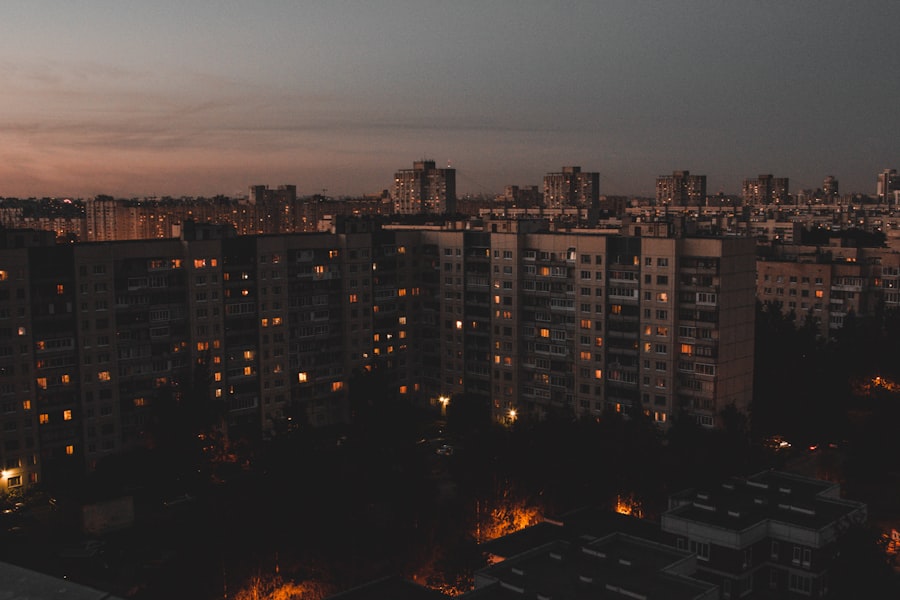
You may have heard the term “heat dome” in recent weather reports, but what does it really mean? A heat dome occurs when a high-pressure system traps warm air in a specific area, creating a dome-like effect. This phenomenon can lead to prolonged periods of extreme heat, often resulting in temperatures soaring well above average.
The air beneath the dome becomes compressed and heated, leading to a feedback loop that intensifies the heat. As you can imagine, this can create dangerous conditions for both people and the environment. The mechanics of a heat dome are fascinating yet alarming.
When high-pressure systems settle over a region, they can block cooler air from moving in, effectively sealing in the heat. This can lead to record-breaking temperatures that last for days or even weeks. You might find it interesting to note that heat domes are not just a summer occurrence; they can happen at any time of year, although they are most common during the warmer months.
Understanding this phenomenon is crucial for recognizing its potential impacts on your daily life and the broader environment.
Key Takeaways
- Heat domes are prolonged periods of excessively hot weather caused by a high-pressure system that traps heat in a specific area.
- Extreme heat can lead to heat-related illnesses such as heat exhaustion and heat stroke, and can exacerbate existing health conditions.
- Vulnerable populations, including the elderly, children, and low-income communities, are at higher risk during heat dome events.
- Strategies for coping with extreme heat include staying hydrated, seeking shade, and using cooling centers or air conditioning.
- Urban heat islands, caused by human activities and infrastructure, can exacerbate the effects of heat domes and lead to even higher temperatures in cities.
Impact on Human Health and Well-being
The effects of a heat dome extend far beyond just uncomfortable temperatures; they can have serious implications for human health and well-being. When temperatures rise, your body struggles to regulate its internal temperature, which can lead to heat-related illnesses such as heat exhaustion and heat stroke. You may find yourself feeling fatigued, dizzy, or even nauseous as your body works overtime to cool itself down.
Vulnerable populations, including the elderly and those with pre-existing health conditions, are particularly at risk during these extreme heat events. Moreover, the psychological impact of extreme heat should not be overlooked. Prolonged exposure to high temperatures can lead to increased stress levels and anxiety.
You might notice that your mood shifts during a heat wave, as the discomfort of sweltering conditions can make it difficult to focus or engage in daily activities. The combination of physical and mental strain can create a perfect storm for health issues, making it essential to take precautions during these extreme weather events.
Vulnerable Populations and Communities

Certain groups within society are more susceptible to the adverse effects of heat domes, and understanding these vulnerabilities is key to addressing the issue effectively. Low-income communities often lack access to air conditioning or adequate housing, making them particularly vulnerable during extreme heat events. You may find it concerning that these populations are not only at risk for health issues but also face challenges in accessing resources such as cooling centers or transportation to safer environments.
Additionally, marginalized communities often experience systemic inequities that exacerbate their vulnerability during heat waves. For instance, individuals with disabilities may struggle to cope with extreme temperatures due to mobility issues or medical conditions that require stable environments. As you consider the broader implications of heat domes, it’s crucial to recognize that addressing these disparities is essential for building a more resilient society.
Strategies for Coping with Extreme Heat
As temperatures rise and heat domes become more frequent, developing effective coping strategies is vital for your well-being. One of the most straightforward methods is to stay hydrated. Drinking plenty of water helps your body regulate its temperature and prevents dehydration, which can exacerbate the effects of extreme heat.
You might also consider wearing lightweight, breathable clothing that allows your skin to cool down more effectively. Creating a cool environment at home is another essential strategy. If you have access to air conditioning, use it wisely by keeping your home cool during the hottest parts of the day.
If air conditioning isn’t an option, consider using fans or closing curtains to block out sunlight. You may also want to plan your outdoor activities for early morning or late evening when temperatures are cooler. By taking these proactive steps, you can significantly reduce your risk of heat-related illnesses.
Urban Heat Islands and Heat Dome Hell
Urban areas often experience heightened temperatures due to a phenomenon known as the urban heat island effect. This occurs when cities absorb and retain heat due to concrete structures, asphalt roads, and limited vegetation. As you navigate through urban landscapes during a heat dome event, you may notice that city temperatures can be several degrees higher than surrounding rural areas.
This exacerbates the already dangerous conditions created by heat domes. The implications of urban heat islands are profound. Not only do they contribute to increased energy consumption as residents crank up their air conditioning, but they also pose significant health risks.
You might find it alarming that urban populations are often more susceptible to heat-related illnesses due to the compounded effects of pollution and limited access to green spaces. Addressing this issue requires innovative urban planning strategies that prioritize green infrastructure and sustainable design.
Climate Change and Heat Dome Events

The relationship between climate change and heat dome events is becoming increasingly evident as global temperatures rise. As you consider the long-term implications of climate change, it’s essential to recognize that extreme weather events like heat domes are likely to become more frequent and intense. Rising greenhouse gas emissions contribute to an overall warming trend that creates ideal conditions for these phenomena to occur.
You may wonder how this affects your daily life and future generations. The increased frequency of heat domes can lead to more severe health impacts, economic losses, and environmental degradation. As communities grapple with these challenges, it becomes clear that addressing climate change is not just an environmental issue; it’s a public health imperative that requires immediate action on both individual and systemic levels.
Policy and Planning for Extreme Heat Events
Effective policy and planning are crucial for mitigating the impacts of extreme heat events on communities. As you think about how local governments can respond to heat domes, consider the importance of developing comprehensive heat action plans. These plans should include strategies for public awareness campaigns that educate residents about the risks associated with extreme heat and provide resources for coping.
Moreover, investing in infrastructure improvements is essential for building resilience against heat domes. This could involve increasing green spaces in urban areas, enhancing public transportation options, or ensuring that cooling centers are accessible to all residents. By advocating for policies that prioritize public health and environmental sustainability, you can play a role in shaping a more resilient future for your community.
Building Resilience and Adaptation to Heat Dome Hell
Building resilience against the impacts of heat domes requires a multifaceted approach that involves individuals, communities, and governments working together. As you consider your role in this effort, think about how you can contribute to community initiatives aimed at increasing awareness and preparedness for extreme heat events. Engaging with local organizations or participating in community workshops can help foster a culture of resilience.
Additionally, advocating for sustainable practices in your daily life can contribute to broader efforts to combat climate change and its associated impacts. You might consider reducing your carbon footprint by using public transportation, supporting local businesses, or participating in tree-planting initiatives in your area. By taking these steps, you not only protect yourself from the immediate dangers of heat domes but also contribute to long-term solutions that benefit future generations.
In conclusion, understanding the complexities of heat domes is essential for navigating their impacts on human health and well-being. By recognizing vulnerable populations and implementing effective coping strategies, you can better prepare yourself and your community for extreme heat events. As climate change continues to influence weather patterns, proactive policy planning and individual actions will be crucial in building resilience against the challenges posed by heat dome phenomena.
In a related article, Stop Forest Burning: Save Trees and Animals, the importance of preventing wildfires and preserving forests is highlighted. The devastating effects of heatwaves and extreme temperatures, as discussed in “Heat Dome Hell: When It Becomes Too Hot for Human Survival,” can be exacerbated by forest fires, leading to further destruction of ecosystems and wildlife. By taking action to stop forest burning and protect trees, we can help mitigate the impacts of climate change and create a more sustainable future for all.
FAQs
What is a heat dome?
A heat dome is a high-pressure system that traps hot air and causes it to sink and spread out, leading to extremely high temperatures and heat waves.
How does a heat dome affect human health?
Heat domes can lead to dangerous heat waves that can cause heat-related illnesses such as heat exhaustion, heat stroke, and dehydration. In extreme cases, it can even lead to fatalities.
What are the signs of heat-related illnesses?
Signs of heat-related illnesses include heavy sweating, weakness, dizziness, nausea, headache, and muscle cramps. In severe cases, it can lead to confusion, unconsciousness, and seizures.
How can people protect themselves during a heat dome event?
To protect themselves during a heat dome event, people should stay hydrated, avoid outdoor activities during the hottest parts of the day, wear lightweight and light-colored clothing, and seek out air-conditioned spaces.
Are certain groups more vulnerable to the effects of a heat dome?
Yes, certain groups such as the elderly, young children, people with chronic illnesses, and those who work outdoors are more vulnerable to the effects of a heat dome. It’s important for these groups to take extra precautions during extreme heat events.





